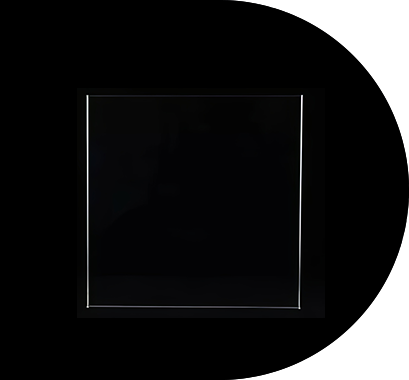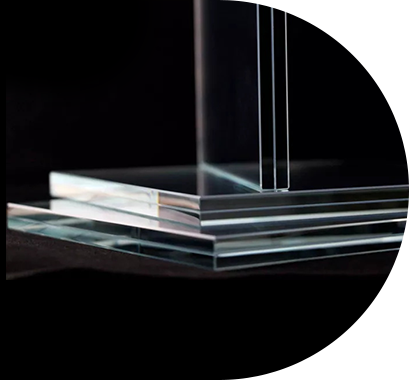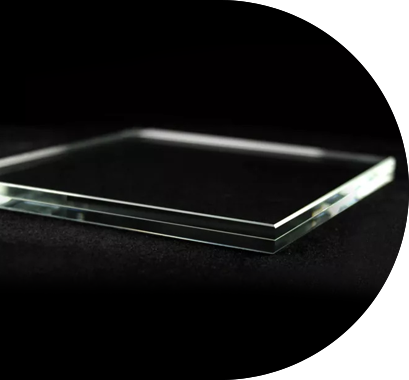Museum laminated glass represents a specialized glazing solution designed to protect priceless artifacts while maintaining optimal viewing clarity. This engineered glass composite goes beyond standard safety glass by incorporating multiple protective features into a single assembly, addressing the unique environmental and security challenges faced by cultural institutions.
Content
- 1 Structural Composition & Material Science
- 2 Critical Performance Characteristics
- 3 Specialized Museum Applications
- 4 Optical Clarity Technologies
- 5 Installation & Maintenance Protocols
- 6 Emerging Technologies & Future Trends
- 7 Case Studies: Iconic Implementations
- 8 Selection Guidelines for Curators
- 9 Conclusion
Structural Composition & Material Science
Multilayer Construction
-
Outer glass plies: 3-6mm tempered or heat-strengthened soda-lime glass
-
Interlayer core: 1.52-2.28mm PVB (polyvinyl butyral) or ionoplast resin
-
Specialty interlayers: UV-filtering, anti-reflective, or low-emissivity coatings
-
Inner ply options: Chemically strengthened glass for added protection
Technical Specifications
| Parameter | Museum Standard | Commercial Grade |
|---|---|---|
| UV Blocking | 99%+ | 30-40% |
| Visible Light Transmission | 90-95% | 70-85% |
| Color Rendering Index (CRI) | >98 | 85-90 |
| Acoustic Reduction | 35-50 dB | 25-35 dB |
Critical Performance Characteristics
Conservation-Grade Protection
-
Ultraviolet filtration: Blocks 380-400nm spectrum without color distortion
-
Infrared mitigation: Reduces thermal loading by 60-75%
-
Humidity control: 0.05-0.1% moisture vapor transmission rate
Enhanced Security Features
-
Impact resistance: Withstands 100+ joule impacts (EN 356 P8A rating)
-
Blast mitigation: Multi-layer configurations for forced entry protection
-
Anti-shatter performance: Maintains integrity at 5x standard glass breakage stress
Specialized Museum Applications
Display Case Glazing
-
Micro-climate preservation: <1% air exchange per day
-
Glare reduction: <1% reflectance at 45° viewing angles
-
Condensation resistance: Down to -20°C dew point differential
Architectural Installations
-
Gallery windows: 10-20 year lifespan without optical degradation
-
Skylight systems: UV-stable edge seals for overhead glazing
-
Security partitions: Discrete ballistic protection up to UL 752 Level 3
Optical Clarity Technologies
Advanced Surface Treatments
-
Nanoporous AR coatings: 0.2% reflectance across visible spectrum
-
Hydrophobic outer layers: 110° water contact angle for self-cleaning
-
Anti-static surfaces: <100 volts surface resistance
Color Accuracy Systems
-
Spectrally neutral interlayers: ΔE <1.0 color shift
-
Low-iron glass substrates: 99.9% pure silica content
-
Optical bonding: <0.1% haze formation over time
Installation & Maintenance Protocols
Structural Integration
-
Frameless systems: Structural silicone glazing for seamless appearance
-
Thermal breaks: Polyamide spacers for condensation prevention
-
Pressure-equalized designs: For climate-controlled galleries
Preservation Maintenance
-
Cleaning procedures: Non-ammoniated, pH-neutral solutions only
-
Inspection intervals: Annual optical clarity verification
-
Sealant monitoring: 5-year elastomeric joint assessments
Emerging Technologies & Future Trends
Smart Glass Integration
-
Electrochromic interlayers: Adjustable tint for light-sensitive works
-
Embedded sensors: Microclimate monitoring within the glass plane
-
Self-healing surfaces: Nanocapsule-based scratch repair
Sustainable Developments
-
Recyclable interlayer systems: Closed-loop PVB reclamation
-
Low-carbon glass production: Hydrogen-fired float lines
-
Bio-based sealants: Plant-derived polysulfide alternatives
Case Studies: Iconic Implementations
-
The Louvre Abu Dhabi: 8,000+ m² of museum laminated glass
-
MOMA Expansion: Custom low-iron laminated skylights
-
British Museum: UV-filtering gallery partitions
Selection Guidelines for Curators
-
Light sensitivity assessment of collection pieces
-
Security threat analysis (theft/vandalism risk)
-
Environmental conditions (RH fluctuations, solar exposure)
-
Viewing angle requirements for optimal visitor experience
-
Long-term maintenance considerations
Conclusion
Museum laminated glass has evolved into a sophisticated preservation tool that actively contributes to artifact conservation while addressing modern security and display requirements. As cultural institutions face increasing challenges from climate change and security threats, advanced glazing solutions will play an ever-more critical role in collection management. Future developments in smart materials and sustainable production methods promise to further enhance the protective capabilities of these specialized glass systems, ensuring they remain at the forefront of museum conservation technology. Proper specification and maintenance of museum-grade laminated glass can extend artifact lifespan by decades while improving visitor engagement through superior optical performance.






